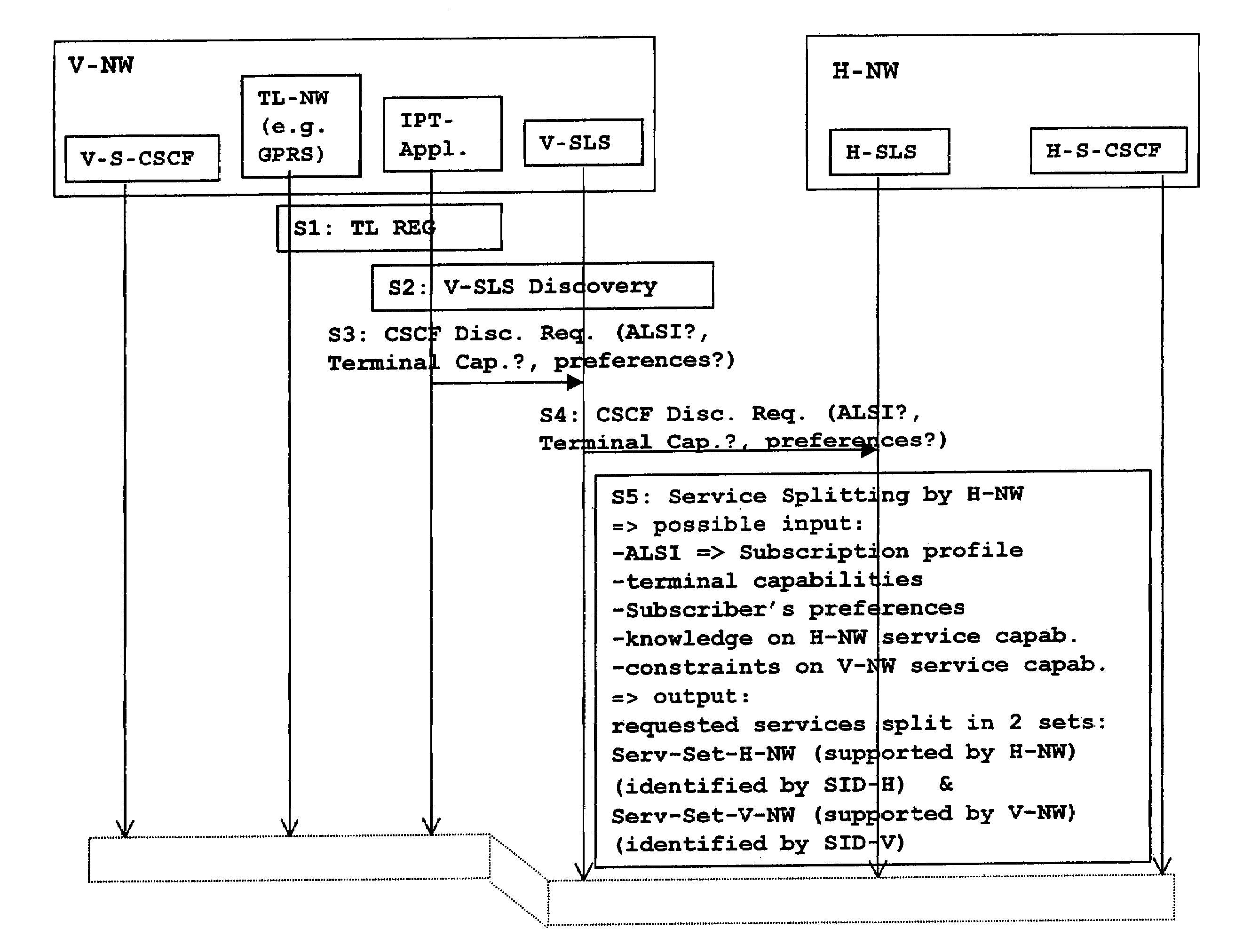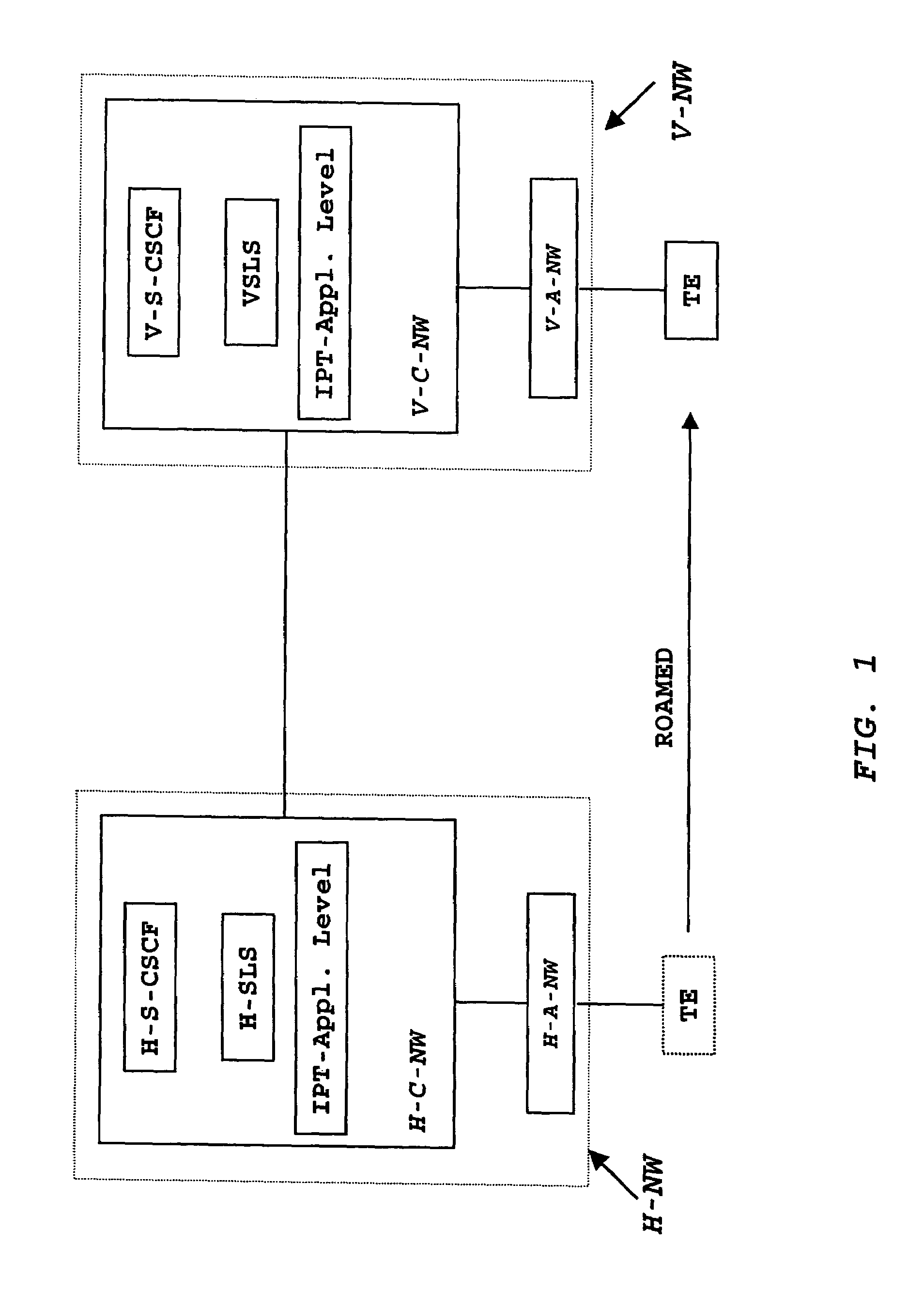Service discovery and service partitioning for a subscriber terminal between different networks
a subscriber terminal and network technology, applied in the field of service discovery and service partitioning for subscriber terminals, can solve the problems of imposing subscriber service limitations, cscf discovery methods that have been proposed, and are not yet fully satisfactory,
- Summary
- Abstract
- Description
- Claims
- Application Information
AI Technical Summary
Benefits of technology
Problems solved by technology
Method used
Image
Examples
Embodiment Construction
[0036]Subsequently, the present invention is described in detail with reference to the drawings.
[0037]FIG. 1 illustrates a basic network architecture of a home communication network and visited communication network with a subscriber having roamed. Note that in the figures and description thereof entities of the home network are denoted with a prefix “H”, while those entities of the visited network are denoted with a prefix “V”. Note also that the illustrated described example is given with reference to a so-called 3G IPT network, which however is not intended to be limiting in any way, but rather has been chosen as an example architecture for a network. Any other network offering similar functionalities and being provided with similar functional entities may be suitable for the present invention being implemented.
[0038]As shown in FIG. 1, a terminal equipment TE is initially registered to (or accesses and / or communicates with) its home network H-NW (first network). The terminal equ...
PUM
 Login to view more
Login to view more Abstract
Description
Claims
Application Information
 Login to view more
Login to view more - R&D Engineer
- R&D Manager
- IP Professional
- Industry Leading Data Capabilities
- Powerful AI technology
- Patent DNA Extraction
Browse by: Latest US Patents, China's latest patents, Technical Efficacy Thesaurus, Application Domain, Technology Topic.
© 2024 PatSnap. All rights reserved.Legal|Privacy policy|Modern Slavery Act Transparency Statement|Sitemap



